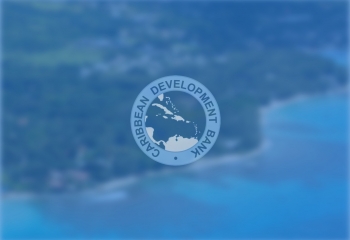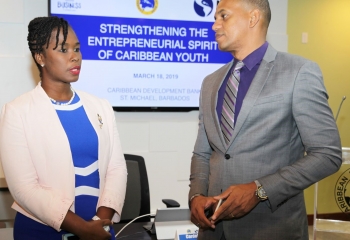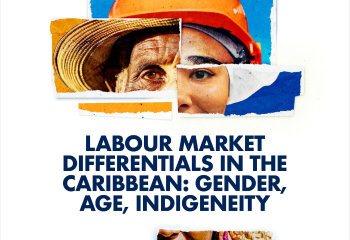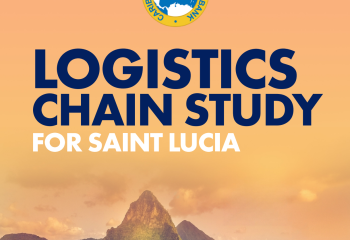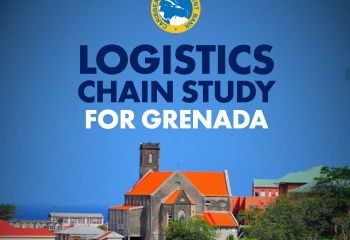Keynote- Whither Finance for Sustainable Development
Salutations
Good morning, Buenos Días, Bon Dia, President of ALIDE, Honorable Prime Minister Pisas, Distinguished Presenters, Participants and online audience.
I want to begin by thanking the organisers for their kind invitation to participate in this fifty-second regular meeting of the ALIDE General Assembly, which brings together a very impressive array of financial institutions and development partners from across the globe to discuss how best to strengthen the role that development finance institutions play in the sustainable development of the Region. The goal of our efforts is about improving the lives of the people of our Region. At the Caribbean Development Bank (CDB), we welcome this opportunity to strengthen connections and networks with our partners across Latin America.
The theme chosen for this 52nd regular meeting - Innovative Technologies and Digitalization to boost Latin American and Caribbean Development - aligns quite well with the core pillars of sustainable development that we ourselves have been championing in the Caribbean context. Perhaps more crucially, it provides a natural link to the issue of connectivity, which is so important a catalyst for our Region’s development efforts.
In the Caribbean, we are still reeling from the ravages wrought by the COVID‑19 pandemic and we are just beginning to see some faint light in the tunnel ahead. Although growth in the Caribbean region is expected to rebound to around 6 percent in 2022 (on the strength of the rebound in tourism) from an average decline of around 9 percent in 2020, several threatening storm clouds have already formed ahead that may significantly dampen this encouraging outlook. Among the key ones is the economic and financial avalanche from the ongoing Russia-Ukraine war, which has already impacted commodity and financial markets, raised energy prices, increased inflation, heightened food insecurity as supply chains face disruptions, and slowed global growth. In addition, monetary tightening in the advanced economies can also have a knock-on effect on the interest rate differential between advanced and developing economies, leading to an outflow of financial resources from developing countries as investors search for greater yields.
In today’s address, I would like to bring a perspective from the Caribbean region on three important issues:
- The Role of Development Finance in the Region’s Transformation Agenda.
- The need for differentiating various modes of development finance.
- Imperatives to support Innovative Development Finance.
Role of Development Finance
I would start by emphasising that finance is not an “end in itself” but a vehicle towards the bigger goal of sustainable development, which lies at the heart of our transformation agenda in Latin America and Caribbean (LAC) region. To effect true transformation though, we will need to direct all our efforts at building resilient ecosystems in the region. Stated differently, sustainable development requires resilient ecosystems. This would necessitate solidifying all dimensions of resilience so that our societies can not only rebound and recover lost ground after major shocks, but as well pivot to a higher and more sustainable welfare path in the future. We therefore need a sustainable transformation agenda at the regional level that is focused on building the following resilience dimensions:
- Social Resilience. Maintaining social advancement through creating health and learning networks and by leveraging digital technology.
- Productive Capacity Resilience. Widening and deepening economic diversification by advancing digitalisation and leveraging knowledge creation to promote the industrialisation of knowledge.
- Environmental Resilience. Mitigating and adapting to climate change and addressing the undiversified energy base, to promote sustainable energy, and sustainable livelihoods in the Region.
- Institutional Resilience. Improving governance and implementation capacity through modernising the business environment and procurement arrangements, implementing new technology and knowledge processes, strengthening public policies and planning processes, and enhancing delivery mechanisms.
- Financing Resilience. Developing and marshalling a financing ecosystem that encompasses a wide spectrum of innovative and affordable financing instruments that are underpinned by a strong regulatory environment and a well-developed financial market infrastructure.
Differentiating Among Various Modes of Development Finance
In the context of these key priorities, it is important that we design a financing ecosystem that anchors holistic, sustainable, and transformative development goals. Since all financing instruments are not created equal, it is essential that we distinguish among terms of financing for rescue, recovery, and long-term repositioning and provide a suite of instruments that can be combined coherently to manage diverse needs, while providing appropriate governance safeguards. Let me elaborate further on these aspects.
Financing for Rescue (Financiación para el Salvamento): This category of financing needs to be highly flexible and targeted at addressing the immediacy of meeting liquidity needs arising from emergencies, especially natural hazards. The critical issue here is to make a significant quantum of financing available with minimum conditionality, automatic triggering, and with a fast pace of disbursement to address immediate challenges. Our major instrumentation in this area should focus on tail events and include short-term liquidity lines, insurance instruments, specialised investment instruments that combine insurance elements, and other emergency financing instruments that are targeted at rapid rescue. Key instruments that already exist in this class in the Region include (i) the CDB Emergency Policy-based Loans; (ii) the Caribbean Catastrophe Risk Insurance Facility, which provides short-term financing to limit the financial impact of catastrophic hurricanes and earthquakes to Caribbean governments; (iii) Insurance-Linked Securities, which include catastrophe bonds that provide short-term financing for pre-defined specific events – Jamaica was the first country to sponsor one such bond that was issued by the World Bank in July 2020; and (iv) rapid disbursing credit and investment facilities[1] that provide concessional financial assistance with limited conditionality for emergency situations, such as the International Monetary Fund (IMF) emergency facilities.
Financing for Recovery (Financiación para la Recuperación): This grouping provides liquidity needs for rebalancing but also includes financial resources geared to start the process of repositioning. This aspect of financing includes policy-based instruments that can be used to finance exogeneous shocks and can take the form of loans and grants and be successors to one-off or single disbursing rescue financing. Given the specific circumstance, they can also help support national budgets but with the associated policy dialogue, economic and sector analysis, and technical assistance to underpin nationally driven policy and institutional reforms. Potential instruments in this category could include (i) Policy-Based Operations; and (ii) Precautionary and Contingent Credit Facilities. These instruments are meant to serve a specific short-term need of jumpstarting and restoring activities in countries following a significant external shock. They are therefore not meant to comprehensively address the longer-term structural issues impeding development in countries.
Financing for Repositioning (Financiación para el Reposicionamiento): The focus here is on affordable financing for the longer-term development goals, with a view to addressing persistent structural weaknesses and transforming our economic, social, institutional, and environmental structures to promote competitive, highly productive, and inclusive economies capable of delivering on sustainable development. The range of financial instruments in this bucket would include concessional and non-concessional financing, public and private sector-sourced finance, as well contingent and non-contingent financing instruments.
Imperatives to support Innovative Development Finance
Ladies and gentlemen, the development needs of our Region and the attainment of the Sustainable Development Goas (SDGs) will require significant collective effort and financial resources. The United Nations Global Compact Action Platform on Financial Innovation for the SDGs estimates that achieving the SDGs will require between USD3 trillion and USD5 trillion in investment annually in developing countries alone. So, where and how do we begin?
It begins with a vision, executed through the mobilisation of financial resources, and facilitated by strategic, collaborative partnerships and a strong ethos of implementation. First, the vision. Consider the potential of mobilising 650 million people, already capable of producing $4.5 trillion in activity and exporting over $1 trillion. Now imagine one integrated, regional space from Mexico and the Bahamas in the North, through Central America and the Caribbean, to Brazil. This partition, while illustrative, defines a connectivity bridge to North and South America, to Europe and Africa across the Atlantic, and Asia and Australia across the Pacific Ocean. Imagine this bridge as the central hub of trade and innovation, a thriving space where Knowledge Creation underpinned all activity and economies had made Resilience the foundation to sustainable livelihoods. I believe this imagination can be a realistic future for our children. Making this a reality would require at least four important imperatives.
The first of these is connectivity — physical, digital, and cultural connectivity. Sustainable development strategies have long recognised the need to widen and deepen avenues for regional cooperation among our countries in the LAC Region. On the physical infrastructure front, improving air, water, road, and rail transportation through an integrated logistics network spanning Mexico and Bahamas in the North, Central America and the Caribbean in the middle to Brazil (and by extension to Argentina) in the South can provide a viable platform for maximising opportunities for production and investments to support global intra-regional trade in goods and services. Implementing a secure, zero-divide, single regional digital space can give a significant boost to how web-based technologies are deployed to conduct business in financial, tourism, government and cultural services in the Region, promote a re-imagined educational space, and address the social need for digital literacy and learning. Deepening our cultural engagement through art, literature, poetry, and music can make a decisive contribution to strengthening cohesion and social understanding of the ambitions of our diverse communities and can forge stronger bonds to support our regional integration efforts. As we look to share the vision of a single region, a single people, a single fundamental cultural concept, should we not aim to declare the region a common multilingual space? Imagine all graduating students certified in all four languages of Dutch, English, French, and Spanish, and university graduates from all our universities being taught courses and gaining professional competency in at least two of the four languages? Imaging the ease of doing business, growth of markets, trade facilitation, and knowledge creation that could ensue from that linguistic integration? I think Curaçao is already a great example of this benefit.
The second revolves around developing a multi-sourced, multi-instrument framework that can marshall the financing resources that we need to support targeted development objectives. The financial instrumentation in this suite should include:
- Bonds—SDG-themed Bonds, for example green bonds, sponsored blue bonds to finance projects for ocean conservation and marine biodiversity, and orange bonds for growing our cultural and creative industries (e.g., music, sports, design).
- Private Equity – for funding specific development-related objectives with auxiliary governance and taxonomies to monitor, evaluate, and ensure achievement of goals.
- Contingent debt — Insurance, Catastrophe bonds, Gross Domestic Product (GDP)-indexed bonds, Reform-incentivising bonds with successive tranches refinanced at lower interest rates conditional on progress in implementing and sustaining key policy and development reform priorities.
- Derivative-based instruments (like the Belize debt swap).
- Concessional Funding—donors, International Financial Institutions specialty-themed funding institutions, such as the Global Climate Fund and the Adaptation Fund.
Mobilising affordable finance would benefit from the development and acceptance of a vulnerability and resilience framework that can redress the disadvantages implicit in the use of Gross National Income (GNI) as the main classification tool for access to concessional finance. Specifically, CDB has proposed the Recovery Duration Adjuster (RDA) — an internal resilience capacity-adjusted GNI measure — as a more appropriate and equitable measure for use in classifying countries for access to concessional finance. The RDA advances existing efforts on developing a multidimensional vulnerability index by incorporating the factors that determine internal resilience capacity of a country — namely, the factors that influence the time it takes to recover to metrics/outcomes existing before a shock event.
Another avenue for mobilising adequate development finance worth considering is through the Chanelling of Special Drawing Rights (SDRs) to Multilateral Development Banks (MDBs). As you know, in August 2021, the IMF’s Board of Governors approved a USD650 billion SDR general allocation with a view to boosting global liquidity, addressing the long-term global need for reserves, building confidence, and fostering the resilience and stability of the global economy. CDB is proposing that one option for financing sustainable development in the Region is for developed countries to channel 2 percent of their excess SDRs holding, which they are unlikely to need for balance of payments support, through MDBs to support targeted development initiatives in our Region. This implies that the channeled funds can be deployed with greater development effect through the MDBs. While this may not seem obvious, it is predicated on the need to address a fundamental problem in development — the integration of the twin issues of stabilisation and long-term sustainable development. In our view, MDBs are well placed to play this integrative role by forging an internal and temporal consistency among the three key policy frameworks in use: I refer to the debt sustainability framework of the IMF, the investment-growth nexus of the World Bank Group, and the Resilience Building Approach of the United Nations. This unifying perspective is key to providing viable, inclusive, and sustainable solutions for transformative development.
Our third imperative revolves around developing partnerships and implementation capacity. Building the required scale of financial assistance will necessitate developing a “Partnership for Development” among development institutions, the regional and international private sectors and the regional public sector that is focused on attaining commonly agreed transformative development goals. The overarching objective would be to support broad economic development and enhance resilience in our countries through investments in projects aligned with SDG goals and associated with carbon competitive energy, climate resilient infrastructure, digitalisation, and economic diversification.
Partnerships embody a ‘share to grow’ philosophy. Networks and communities of practice facilitate knowledge sharing, complementarity of productive capacity, institutional strengthening, and financing strength. Given its well-established network of financial institutions, ALIDE is well positioned to work alongside financial institutions in our region to forge and cement these partnerships. Indeed, wouldn’t the development of the wider Region not be enhanced if we had deeper functional cooperation among all of the development banks in our Region?
Having adequate and affordable finance, creating opportunities of demand, and promoting partnerships will not yield optimal, sustainable outcomes without implementation capacity. Can we candidly confront the institutional, governance, and prevailing attitudes (mindsets) that have limited our progress and commit to steady, persistent reform? While this may take some time, will the increase in the stock of our implementation capacity and the improvement in our risk profiles not be worth the effort? Shouldn’t this be a joint responsibility of all of us — leaders and institutions in our communities?
In conclusion, ladies and gentlemen, the future is ours to create. Let us be emboldened by the notion that the optimism of our spirit will always prevail over the pessimism of our intellect. While the intellect revels in glorifying challenges, the spirit only sees opportunity in imagination. We can re-imagine, re-balance our current state, and re-position for a brighter tomorrow.
Let me assure you that CDB stands ready to forge strategic and enduring partnerships for mobilising and deploying financing resources needed to unlock the abundant natural resources we have in our Region and propel the sustainable development of our people.
I thank you.
[1] Examples of these include the IMF’s Rapid Credit Facility which provides concessional financial assistance with limited conditionality to low-income countries (LICs) facing an urgent balance of payments and the Rapid Financing Investment Facility that provides financial assistance to all countries facing urgent balance of payments needs.
